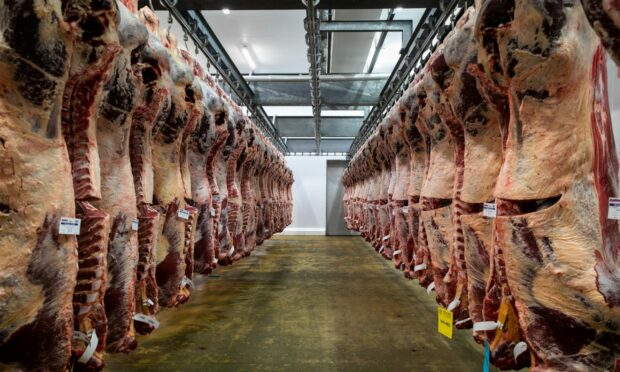Prime cattle prices continued to set new record high levels at Scottish abattoirs throughout February.
The latest figures from Quality Meat Scotland (QMS) revealed that R4L steers reached 489.2p per kg deadweight in the week ending February 25, an increase of 18.5% over the same week last year and of 30% compared to the five-year average.
Iain Macdonald, QMS market intelligence manager, said it is unusual for market prices to be rising at this time of year.
“Between 2010 and 2022, R4L steer prices were lower in the eighth week of the year than in the first week of the year on 10 of 13 occasions,” said Mr Macdonald.
“Only in 2012 was the price at its highest of the year so far in week eight. Over the 13 previous years, there was an average reduction of 1.5% for the period but this year prices jumped 6% higher.
“In Scotland, prime cattle prices have been rising despite weekly prime cattle slaughter being seasonally firm, running above its 2022 weekly average level, with spring-born cattle from 2021 reaching peak slaughter age.”
The latest cattle population data from the British Cattle Movement Service (BCMS) revealed a significant year-on-year reduction in slaughter-age cattle on Scottish farms for January 2023.
The combined number of beef-sired cattle and dairy-sired males on Scottish holdings aged 12-29 months was down by 3.3% on a year earlier, driven by an increased outflow of store cattle to England since autumn 2021.
Mr Macdonald also pointed out that while Scottish abattoirs are mainly drawing from cattle aged under two years old, age at slaughter tends to be older and mare varied at GB level during the first quarter.
He said last summer’s drought may have slowed finishing periods south of the border.
“The steeper contraction in the suckler herd in recent years in England and Wales is likely to have been supporting the demand for Scottish-born store cattle, especially given that the beef herd accounted for a much smaller 43% of the total breeding cow herd in England and Wales at the beginning of 2023 compared to almost 73% in Scotland,” he said.
In 2022 the number of cattle aged under 30 months moving from farms in Scotland to farms in England and Wales rose by 35% on 2021 and by 42% above the five-year average.
While the pace of increase slowed in the second half of the year, this partly reflected a higher base from autumn 2021 to compare against, and the outflow would still be enough to reduce the prime cattle kill in Scotland by around 2% in the first half of 2023 compared to a scenario of unchanged moves.
“This helps explain why prime cattle availability in Scotland is set to remain tight in the first half of 2023 despite increased calf registrations in 2021,” he said.
“In 2022, total registrations were only down marginally from 2021 and while this could see prime cattle availability begin to level-off in 2024, BCMS data shows that this pool of cattle has already been affected by the increased store cattle outflow last autumn.
“Looking ahead, the decline in the breeding herd seen in 2022 is likely to have an impact on calf registrations in spring 2023, with its peak impact on prime cattle availability then occurring in the first quarter of 2025 when these calves reach peak slaughter age at just under two years old.
“However, a reduced breeding herd across GB means that store cattle availability is set to tighten further in autumn 2023 and spring 2024.”

